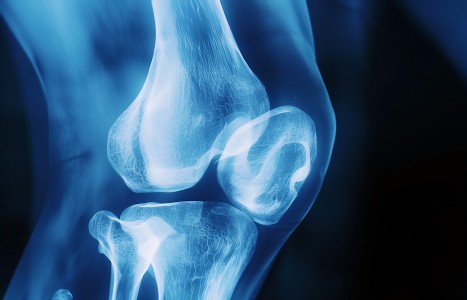While there may be no “magic bullet” when it comes to health, this should not dissuade patients or practitioners from seeking out ingredients that offer multiple health benefits. When it comes to dietary supplements, there are thousands upon thousands of choices. So, why not choose one that can address pain and assist with mental health? A supplement that can address inflammation, while also preventing certain types of cancer.
| Digital ExclusiveUnderstanding Lower Body Mechanics and Its Relationship to Chiropractic Principles
The lower kinetic chain is comprised of the foot, ankle, knee, hip into the inominates, and the lower back. This chain is largely responsible for the majority of lower-back-pain syndromes we see in our offices. Despite this fact, many of us still do not check our patients' feet during normal exams.
Some companies have spent many dollars trying to educate doctors about the benefit of evaluating posture from the feet up. Yet I speak to many of my colleagues each day who do not do this, nor use orthotics as treatment. I have heard things such as, "I only give them to patients who really need them." I cannot understand how a doctor can treat back pain, which in most cases is due to poor lower-body mechanics, and not check patients' feet during their initial examinations.
When I was in school, we learned about the basic pelvic distortion pattern and its role in spinal subluxation patterns. On x-ray, these patients usually have one hip significantly lower than the other one, and rotation may be seen in the spinous processes as well. I can remember foot levelers doing studies which x-rayed patients with and without orthotics. In many of those same patients, the pelvic unleveling we saw initially was reduced.
What does this mean to our patients and their pain?
Pelvic unleveling is a common x-ray finding on patients with overpronation. This correlates with the basic pelvic distortion pattern we learned in school. Unfortunately, pelvic unleveling is a biomechanical symptom of foot overpronation problems and, unless we apply some correction to the feet, patients will always have problems from poor foot posture. The secondary muscular changes which occur over the years due to this are also important for the chiropractor to address, because a foot orthosis is only part of the solution to help people with foot-related back pain. Since foot posture is inherited and generally presents at the age of three or four, the muscles on the side of overpronation will tend to be significantly shortened and lack flexibility. This creates a pattern of muscle tightness and joint dysfunction I have termed this the basic pronation accommodation pattern. When overpronation is present, the patient will, depending on the severity, experience many of the following: hip cracking or clicking; back pain; sciatica; knee soreness; and leg cramps or shin pain.
Management
What is the most sensible way to manage this type of patient?
Patients with foot overpronation should be fitted with custom-molded foot orthotics. To be successful in your subscription, you must fit it to your patients' lifestyles. If the device does not fit in your patients' shoes, they will not wear it.
You must also treat the pattern of muscular dysfunction. If you just treat the leg or the lower back, weakness in the lower kinetic chain can begin to create problems again. I find that myofascial release is one of the most effective ways of re-educating the lower kinetic chain because it restores normal soft-tissue flexibility in a predictable fashion. Properly used, it can decrease treatment times and greatly enhance results, while eliminating the need for physiotherapeutics. Once the tissues are loosened up, specific lower-back exercises (roman chair) and gluteal exercises (stepper, posterior kicks) can be used to strengthen the tissues over three to four weeks.
It is also important to adjust the patient, but I have found that when you use myofascial release to fix the muscular aspect, and orthotics to fix the foot posture, the patients require few spinal adjustments to resolve their problems. This is because the muscles and foot posture are two of the most important causative factors in those chronic spinal subluxations we typically see in many of our patients.
Patients can continue to wear orthotics for the rest of their lives; it becomes part of their daily routine.
Managed Care and Your Profitability
Many providers may not realize how beneficial orthotics can be to their patients. With managed care eating up some of the profits and making DCs work harder for less, providing orthotics to patients who will benefit from them can help improve your cash flow. I recommend never taking assignment on orthotics. Take a 50 percent deposit up front and the balance when the patient receives the orthotics. If you keep the cost reasonable, and stress the importance of the device as appropriate treatment, the majority of patients will use orthotics.
William D. Charschan DC, CCSP
N. Brunswick, New Jersey


